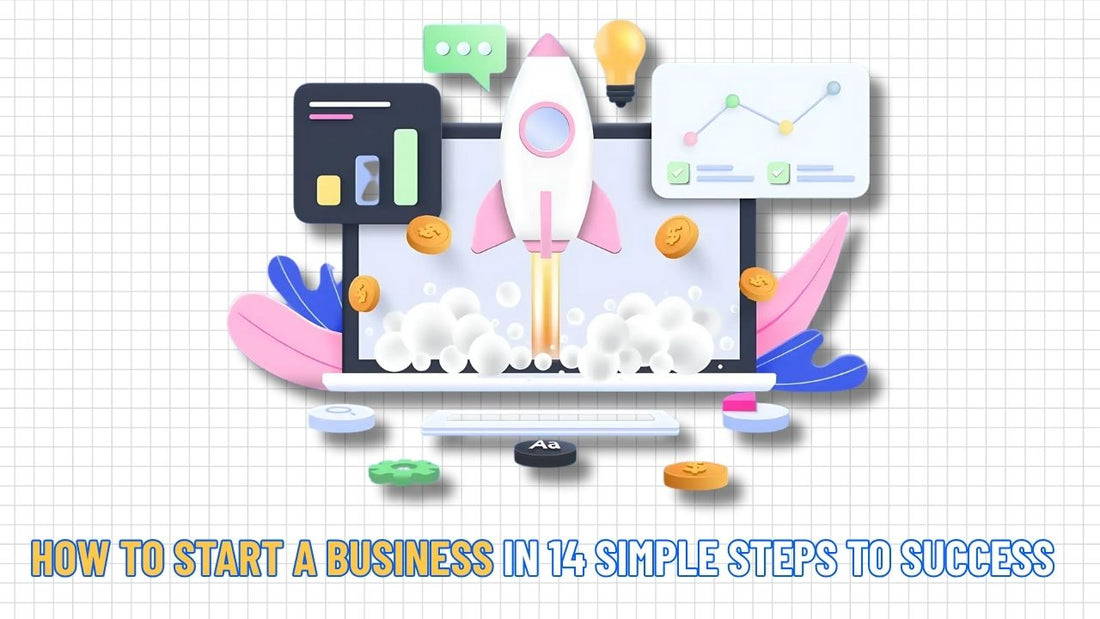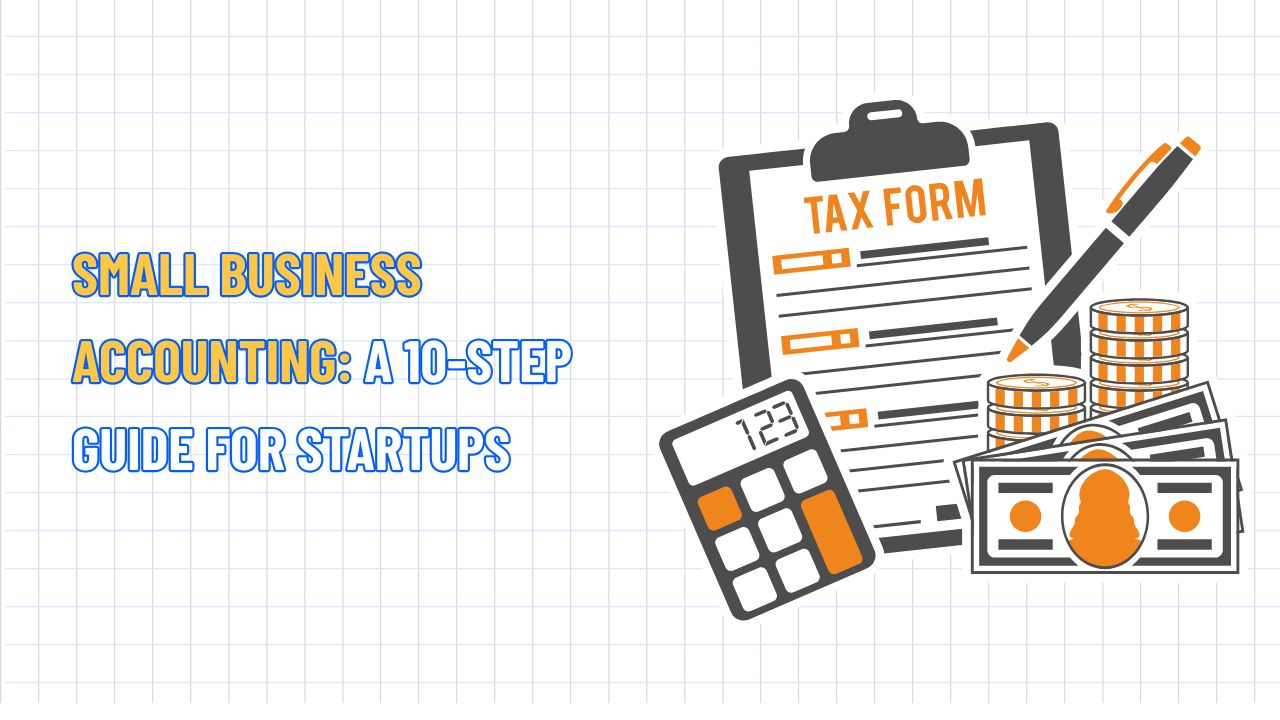How to Start a Business in 14 Simple Steps to Success
Table of Contents Hide
How to start a business is an inspiring journey that turns your ideas into reality. In this guide, NextSky provides 14 detailed steps to launch a business and shares unique insights to help you confidently realize your entrepreneurial dreams.
How to start a business with 14 steps
1. Discover and validate your business idea
Every successful business begins with a sharp idea that solves problems, meets market needs, or leverages the founder’s unique strengths. To transform and validate your idea:
- Identify a problem: Observe challenges around you to find solutions. For example, NextSky created Shopify themes that enable fast setup and SEO optimization for online entrepreneurs.
- Tap into passion: Ideas tied to your skills and passions are more likely to succeed, as you’ll stay committed.
- Validate the market: Test demand with polls, posts, or tools like Google Trends, BuzzSumo, or online communities for real-world insights.
- Assess potential: Evaluate if your idea can grow into a scalable, sustainable brand.
- Test with a minimum viable product (MVP): Launch a small batch of products on Shopify or offer a service to a limited group to gauge feedback before significant investments.

Real-world example: Amanda Buhse, founder of Coal and Canary, started making handmade candles as a hobby. By testing demand through small sales channels, she turned her idea into a $2 million business, supplying luxury candles for events like the Oscars and Grammys.
2. Research the market and competitors
Understanding the market and competitors is key to making informed decisions. Thorough research helps you identify target customers, seize opportunities, and mitigate risks.
- Primary research: Conduct surveys, interviews, or focus groups to uncover customer needs, what problems they face, what they expect, and how much they’re willing to spend. For example, a quick Instagram poll can reveal youth preferences.
- Secondary research: Use industry reports, statistics, or tools like Statista to spot trends. For instance, if planning an organic food store, analyze the growing demand for sustainable consumption.
-
SWOT analysis:
- Strengths: Unique products, advanced technology, skilled team.
- Weaknesses: Limited capital and weak marketing experience.
- Opportunities: Sustainable e-commerce, rising demand for online services.
- Threats: Intense competition, economic fluctuations.
- Analyse competitors: Study their pricing, marketing channels, and customer feedback to find gaps for your advantage. For example, NextSky stands out in terms of superior load speed and SEO compared to standard Shopify themes.
- Tools: Use Ahrefs, Semrush, or SimilarWeb to analyze keywords, traffic, and competitor content, forming the basis for a unique value proposition (UVP).
Real-world example: Raquel Harris, founder of Warm Up, noticed hand sanitizers didn’t address fungal issues in boxing gyms. She developed a specialized health product line, hitting the exact needs of athletes.
3. Choose your product or service sourcing
How you source products or services impacts costs, quality, and scalability. Here are standard options:
- Handmade products: For jewellery, candles, or food, set up a home workspace or rent a studio. Ensure compliance with safety regulations for food or cosmetics.
- Dropshipping: Sell products without holding inventory, saving initial costs, partner with reliable suppliers via Oberlo or Spocket for quality and fast shipping.
- Print-on-demand: Create custom designs for t-shirts, mugs, or posters. Services like Printful or Printify handle production and shipping, which is ideal for creative businesses.
- Large-scale manufacturing: Partner with manufacturers via Alibaba or local suppliers for exclusive products. Secure clear contracts to ensure quality and delivery timelines.
- Specialized services: For consulting, tutoring, or web design, build an online portfolio to showcase expertise. Use platforms like Wix or Shopify to create a professional site.

Real-world example: Melissa Butler of The Lip Bar started making lipstick in her kitchen, later partnering with a professional manufacturer to scale, meeting growing demand.
4. Create a comprehensive business plan
A business plan is your guiding compass, shaping strategy, attracting investors, and ensuring efficient management. A strong plan includes:
- Executive summary: A concise overview of your business, mission, goals, and core values. Example: “Build a sustainable fashion brand for Gen Z.”
- Market analysis: Define target customers, industry trends, and competitors based on research.
- Products/services: Detail what you offer, emphasizing benefits and how they solve customer problems.
- Marketing strategy: Plan to reach customers via SEO, paid ads, social media, or content marketing.
- Financial projections: Include startup costs, expected revenue, break-even point, and cash flow for 1–3 years.
- Operational plan: Outline timelines, key milestones (e.g., product launch in 6 months), and team roles.
- Use templates from SBA or Shopify to save time, and update your plan regularly based on real data and feedback. Include a “contingency plan” for worst-case scenarios, like economic downturns, and your response strategy.
Real-world example: Darby Pritchards, a UK jewellery business, succeeded with a clear plan focusing on mid-range products, avoiding overexpansion early on.
5. Choose a memorable business name
Your business name is the first impression customers have. To create a standout, lasting name:
- Spark creativity: Combine industry-related keywords or use tools like Shopify’s Business Name Generator.
- Check availability: Ensure the name isn’t trademarked via USPTO or local intellectual property offices. Verify domain availability on GoDaddy or Namecheap.
- Ensure flexibility: Choose a name broad enough for long-term growth, avoiding overly local or product-specific names if planning national expansion.
- Protect your brand: Once finalized, register the domain, social media handles, and trademark to prevent theft of valuable assets.

6. Select the proper business structure
Your business structure affects legal liability, taxes, and daily operations. Common options include:
- Sole proprietorship: Simple, low-cost, but you bear full legal liability. Ideal for small, low-risk projects.
- Limited liability company (LLC): Protects personal assets, offers tax flexibility, and suits small businesses.
- Corporation: Fits large businesses seeking investment or stock issuance, but involves complex taxes and processes.
- Partnership: Ideal for businesses with multiple owners, requiring clear profit and responsibility sharing agreements.
- Cooperative/nonprofit: For mission-driven organizations, requiring IRS registration for tax exemptions.
- Consult a lawyer or use services like LegalZoom to choose a structure based on staff size, capital, and expansion plans. For international growth, LLCs or corporations ease compliance with foreign regulations.
Real-world example: Nonna Nerina, an 84-year-old Italian chef, chose a sole proprietorship for her online cooking classes due to its simplicity and affordability.
7. Secure funding for your business
Funding fuels your startup and growth. Consider these options:
- Bootstrapping: Use personal savings to start, retaining complete control. Ideal for small businesses, though growth may be slower.
- Crowdfunding: Platforms like Kickstarter, Indiegogo, or Patreon raise funds from the community while building a loyal customer base.
- Small business grants: Explore government or nonprofit grants from SBA.gov, FedEx, or Second Service Foundation, especially for women, minorities, or rural businesses.
- Loans or credit lines: Apply for SBA loans or use 0% introductory business credit cards, ensuring a clear repayment plan to avoid financial risks.
- Angel investors: Pitch to wealthy individuals via networks like Golden Seeds or Tech Coast Angels, backed by compelling presentations and data.
- Revenue-based financing: Repay based on sales, ideal for e-commerce with steady cash flow, maintaining financial flexibility.
Real-world example: Bushbalm started with a $900 investment from three founders, later raising funds through crowdfunding and investor pitches to achieve eight-figure revenue.

8. Register your business
Registering your business legalizes operations and protects against legal risks:
- Identify location requirements: Registration varies by country or state. In the US, check your state’s Secretary of State website; in Vietnam, contact the local Department of Planning and Investment.
- Obtain an EIN: Register for a free Employer Identification Number via the IRS (US) for tax filing and opening a business bank account.
- Trademark your brand: Protect your name, logo, or products via the USPTO or Vietnam’s intellectual property agency.
- Secure permits/licenses: Check industry-specific requirements via SBA.gov or local authorities. For example, food or alcohol sales require special permits.
- Use local government checklists to ensure compliance. Register intellectual property early, like brand names or patents, to avoid disputes, especially for international markets.
Real-world example: Strathcona Spirits navigated complex distillery regulations by diligently applying for permits and securing approval step by step.
9. Purchase smart insurance
Business insurance shields you from unexpected risks, ensuring safe and sustainable operations. Consider these common types:
- General liability insurance: Covers accidents, property damage, or lawsuits from business activities.
- Professional liability insurance: Protects against errors or negligence in services, like incorrect consulting or flawed designs.
- Product liability insurance: Essential for physical product businesses, guarding against claims from defective items.
- Business interruption insurance: Compensates for lost income during disasters, fires, or unforeseen events.
Real-world example: A small US retail store avoided significant financial loss after a fire thanks to business interruption insurance, allowing operations to continue during recovery.

10. Organize business finances
Separating personal and business finances simplifies accounting, tax filing, and credibility:
- Open a business bank account: Choose a bank with low fees, small business support, and accounting software integration. Provide your EIN and registration documents.
- Set up accounting systems: Use tools like QuickBooks, Xero, or Wix Payments to track income, expenses, invoices, and payroll. NextSky integrates these for efficient financial management.
- Plan for taxes: Understand obligations like sales tax, corporate income tax, or VAT (for international business). Tools like Avalara ensure compliance.
Real-world example: A small business using QuickBooks for automated accounting saved hours of manual work and avoided tax filing errors.
11. Build a strong, memorable brand
Your brand is your business’s soul, helping you stand out and resonate with customers. Focus on:
- Brand visuals: Use tools like Wix’s Logo Maker or hire a professional designer for a striking logo. Ensure consistent colours, fonts, and imagery across your website, packaging, and social media.
- Brand story: Share an authentic, emotional story. For example, NextSky emphasizes empowering small businesses with innovative e-commerce solutions.
- Brand voice: Define a professional, friendly, or creative communication style to connect with your audience.
- Style guide: Create a guide for logo use, fonts, colours, and tone to ensure platform consistency.
Real-world example: Coal and Canary built a refined brand with a unique logo and a story of evolving from a home hobby to a global brand, attracting major retailers.

12. Create a professional, optimized website
Your website is your digital storefront, where customers, partners, and investors learn about you. To build an effective site:
- Choose the right platform: Use Shopify, Wix, or WordPress for customizable templates. NextSky’s themes, like Agile or Umino, are optimized for speed and SEO, which is ideal for e-commerce.
- Optimise for SEO: Naturally integrate keywords like “how to start a business” or industry terms into titles, meta descriptions, headers, and content. Use Google Keyword Planner for high-search-volume keywords.
- Mobile-friendly design: With over 50% of web traffic from mobile, ensure your site looks great on phones and tablets.
- Incorporate essential features: Add payment gateways (Stripe, PayPal), booking systems (Wix Bookings), or live chat for instant customer support.
- Build trust: Display customer testimonials, clear return policies, and security certifications (like SSL).
Real-world example: Healthy Roots Dolls used a Shopify store with a user-friendly design, high-quality images, and seamless checkout to boost sales of unique dolls.
13. Market your business strategically
Marketing drives growth, attracts customers, and builds your brand. Combine these strategies:
- Search engine optimization (SEO): Use target keywords like “how to start a business” to rank higher on Google. Create high-quality content addressing user needs.
- Social media: Leverage Instagram, TikTok, LinkedIn, or YouTube to engage customers. Post short videos, behind-the-scenes stories, or testimonials for relatability.
- Email marketing: Build an email list with incentives like free guides or discounts. Send personalized emails to boost conversions.
- Paid advertising: Run Google or Meta Ads targeting age, interests, or location. Start with a small budget to test before scaling.
- Content marketing: Write blogs, produce podcasts, or create YouTube videos to share expertise, drive organic traffic, and build credibility.

Real-world example: Partly Sunny Projects, a plant-selling business, used short TikTok videos to showcase products, driving thousands of visits to their Shopify store.
14. Scale your business
Once stable, focus on sustainable, efficient growth:
- Smart hiring: Recruit freelancers or full-time staff for high-value marketing or customer service roles. Use platforms like Upwork or LinkedIn to find talent.
- Diversify products/services: Listen to customer feedback to expand offerings, like adding accessories or eco-friendly lines to increase appeal.
- Explore international markets: Research tax and customs regulations for global expansion. Ensure transparent pricing, including taxes and shipping.
- Build a customer community: Regularly use social media, email, or loyalty programs to boost repeat purchases and brand advocacy.
Real-world example: XO Marshmallow grew from a farmers’ market stall to a global e-commerce brand by leveraging social media and customer feedback to refine products.
How to start an online business easily
Online businesses offer work flexibility, cost savings, and global customer reach.
- Build a strong foundation: Choose a fitting structure for asset protection, like a simple sole proprietorship or an LLC. Register a domain, open a business bank account, and integrate online payments. Understand legal regulations to avoid issues.
- Launch a professional website: A clean, user-friendly, SEO-optimised site attracts customers. Clear product pages, accessible contact info, testimonials, and smooth checkout build trust.
- Reach customers smartly: Proactively promote your brand via ads, influencers, short videos, and email lists. Share reviews and behind-the-scenes content to establish credibility. Test strategies and focus on what works.
Starting a business is a challenging yet opportunity-filled journey. With NextSky’s 14 detailed steps, you can turn your vision into a thriving enterprise that delivers real customer value.










